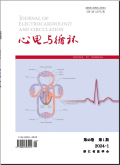Lesson Eighty-two Eccentric atrial activation during a narrow QRS tachycardia:what is the mechanism?
A 49-year-old woman presented with a 2-year history of recurrent palpitations and documented episodes of paroxysmal supraventricular tachycardia (SVT) terminated with adenosine. Resting 12-lead electrocardiogram (ECG) revealed normal sinus rhythm without preexcitation. She had a structurally normal heart on echocardiogram. After having obtained an informed consent, an electrophysiology study was performed using standard technique and a decapolar coronary sinus (CS) catheter was inserted with the distal pole positioned at the lateral mitral annulus(Figure 1A). Baseline measurements revealed a sinus cycle length of 804 milliseconds and an atrial-His (AH) interval and His-ventricular (HV) of 72 and 36 milliseconds, respectively. Incremental ventricular pacing showed eccentric retrograde atrial activation with earliest activation noted at CS bipolar pair 3-4. Although atrial activation was earlier on the more distal CS electrodes versus the His bundle electrode, the difference in activation between CS 3-4 and CS 4-5 was minimal (Figure 1B).
37
2018-05-07(万方平台首次上网日期,不代表论文的发表时间)
共4页
137-140






